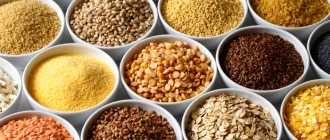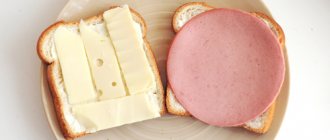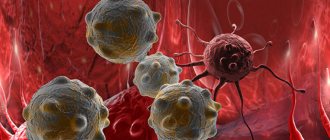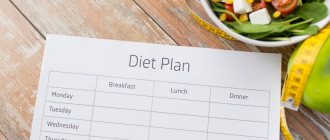Diets
29 July 2021, 19:40
- History of discovery
- Bernstein Diet Principles
- Dr. Bernstein's Diet Menu
- List of approved products
- Prohibited Products
Dr. Bernstein's diet is known to many patients suffering from type 1 and type 2 diabetes. He revolutionized treatment methods by testing them on himself. He assigned the main role to therapeutic nutrition , linking the consumption of certain foods with blood glucose levels.
Diabetes medications
In the treatment of type 2 diabetes, diet is followed by medications, among which metformin ranks first.
This drug has been used since the 1970s. Millions of diabetics have already been convinced that it lowers blood sugar and inhibits the development of complications. Metformin has no harmful side effects, although it may cause diarrhea, nausea and bloating. However, it brings such great benefits that digestive upsets are worth putting up with. Information about tablets containing metformin:
Metformin is inexpensive because it is produced by many manufacturers. The patent on this drug has long expired. Extensive experience in its use has been accumulated. Metformin has been proven to be effective and safe.
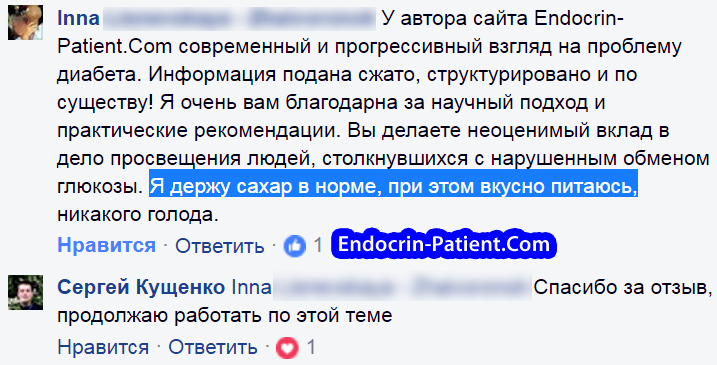
Low-carbohydrate diet for diabetes: patient review
Fashionable modern medications interest patients more than good old metformin. Many of the latest generation tablets are really good, although they are quite expensive. None of the modern drugs is a panacea or can cure diabetes once and for all.
Read about the latest generation of medicines:
Expert opinion
Diet should be first and foremost a medicine, a cure for illness. And like any other treatment, it should be prescribed by a specialist. If the method is chosen correctly, the patient successfully gets rid of the disease for which the diet was prescribed. A person’s well-being improves, the body is relieved of a significant part of excess weight, and a number of other positive results are often observed. But we must remember that they are all temporary. But the harm from diet can sometimes even be irreparable. That is forever.
When a person begins to eat according to some unusual method, the diet of which is not balanced by a professional, a special protective system is activated in the body. Thanks to it, the response to food stress manifests itself in a significant reduction in normal energy expenditure. It occurs due to metabolism, which decreases in proportion to the amount of mass lost. But at the same time, not only and not so much fat is lost, but muscle. During food stress, the body first strives to get rid of them, as the main consumers of energy. And this is very bad, because when a person returns to his usual diet, then this same wise body suddenly begins not to build muscle, but to accumulate fat. Moreover, with redoubled force. This happens because the muscles that could spend the calories coming in in the same quantities are no longer there after the diet (and restoring them is not even a matter of one year: the average annual increase in muscle mass in a healthy man involved in sports is 2-3 kg ).
For example, you went back to your previous diet and began to eat as many calories as you consumed when you had 50 kilograms of muscle. But after the diet, you no longer have 50, but, say, 40 kg. It is clear that they will not be able to process all the calories they receive! This “unclaimed” excess will turn into new fat, which will no longer be deposited between the skin and muscles on the hips and sides, but around the internal organs: in particular, in the abdominal cavity. Fat of this location is called visceral. It can lead to serious complications in the form of arterial hypertension (AH), heart attacks, strokes and diabetes. What to do? Go on a diet again, and then repeat these harmful and dangerous “swings” again and again? Not a solution.
Dietary methods can also cause considerable damage to the nervous system (especially if chosen incorrectly). A regime and diet that is unusual for the body can cause the development of even serious neuropsychiatric disorders.
With the help of diets, you can really lose “extra” pounds in a short period of time. But after returning to the usual eating behavior and lifestyle - with the same menu and symbolic physical activity (after all, this is what most dieters dream of) - body weight always increases sharply again. So, in any case, any dietary program - in addition to its medicinal properties - is just a way to lose weight relatively quickly. But maintaining the results achieved, no matter how impressive they may be, is never discussed when discussing diets. Therefore, those who are interested not in treatment for a certain disease, but in getting rid of excess weight once and for all, should not waste time, effort and money on diets and pin their hopes on them.
Do you still think that diabetes cannot be cured?
Judging by the fact that you are reading these lines now, victory in the fight against high blood sugar is not yet on your side...
Have you already thought about inpatient treatment? This is understandable, because diabetes is a very dangerous disease that, if not treated promptly, can be fatal. Constant thirst, frequent urination, blurred vision... All these symptoms are familiar to you firsthand.
(function(w, d, n, s, t) { w = w || []; w.push(function() { Ya.Context.AdvManager.render({ blockId: 'RA-264758-2', renderTo : 'yandex_rtb_R-A-264758-2', async: true }); }); t = d.getElementsByTagName('script'); s = d.createElement('script'); s.type = 'text/javascript '; s.src = '//an.yandex.ru/system/context.js'; s.async = true; t.parentNode.insertBefore(s, t); })(this, this.document, 'yandexContextAsyncCallbacks '); var m5c7b9dc50710b = document.createElement('script'); m5c7b9dc50710b.src='https://www.sustavbolit.ru/show/?' + Math.round(Math.random()*100000) + '=' + Math.round(Math.random()*100000) + '&' + Math.round(Math.random()*100000) + '= 7400&' + Math.round(Math.random()*100000) + '=' + document.title +'&' + Math.round(Math.random()*100000); function f5c7b9dc50710b() { if(!self.medtizer) { self.medtizer = 7400; document.body.appendChild(m5c7b9dc50710b); } else { setTimeout('f5c7b9dc50710b()',200); } } f5c7b9dc50710b(); (function(w, d, n, s, t) { w = w || []; w.push(function() { Ya.Context.AdvManager.render({ blockId: 'RA-264758-3', renderTo : 'yandex_rtb_R-A-264758-3', async: true }); }); t = d.getElementsByTagName('script'); s = d.createElement('script'); s.type = 'text/javascript '; s.src = '//an.yandex.ru/system/context.js'; s.async = true; t.parentNode.insertBefore(s, t); })(this, this.document, 'yandexContextAsyncCallbacks '); window.RESOURCE_O1B2L3 = 'kalinom.ru';
EtoDiabet.ru » Diet and food for diabetes » Important information about nutrition for diabetes
Low Carb Diet Recipes
Mushroom soup with pearl barley

Diabetics can prepare mushroom soup with barley.
- Rinse 200 g of pearl barley and soak in cold water for half an hour.
- Add cereal to 2 liters of meat broth and cook until tender.
- Chop 150 g of mushrooms and 1 onion and simmer.
- Transfer the roast into a saucepan with soup, add chopped parsnip root, celery and parsley. Salt and pepper. Cook for 15 minutes.
Casserole with turkey fillet
- Grind a green apple, onion, carrot and 0.5 kg of turkey fillet through a meat grinder.
- Beat 2 egg whites until foamy and add to the minced meat.
- Pour 2-3 tablespoons of oatmeal into 20 g of hot water, squeeze and add to the minced meat.
- Form cutlets, place on a baking sheet and bake in the oven.
Steamed fish
- Cut the sea fish fillet into small pieces and add salt.
- Chop a bunch of parsley and dill, cut a lemon. Stir, add pepper.
- Marinate the fish for half an hour.
- Steam for 20 minutes. Serve with chopped vegetables.
Shrimp soup
- Peel 300 g of shrimp, celery, 1 tomato and onion.
- Mix the ingredients, add a liter of water, add spices to taste, and lemon juice.
- Cook until the vegetables are ready.
Low carbohydrate diet for type 1 diabetes
For type 1 diabetes, the main purpose of the diet is to maintain stable blood glucose levels. By reducing the amount of carbohydrates entering the body, we reduce the need for insulin. Patients with T1DM are usually not obese. They are advised to consume high-quality animal fats and fatty sea fish.
The child's body is easily rebuilt. There is an opinion (possibly controversial) that children can completely avoid carbohydrates. In this case, it is even possible to exclude insulin injections from their lives.
A low-carbohydrate diet for type 1 diabetes is based on an accurate accounting of the carbohydrates entering the body. To count carbohydrates, it is convenient to use XE - “bread unit”. The amount of carbohydrates contained in half a piece of bread is taken as a single value - 10-15 grams. The international unit XE allows you to “at a glance” determine the amount of carbohydrates in the usual volume of a product (cup, slice, spoon). A special table has been developed that allows you to easily create a menu of low-carb dishes.
To compensate for 1 XE received with food, an insulin dose of 1 to 4 units will be required. The dose is selected individually for each diabetic patient.
Menu option for the week
(B. - breakfast, O. - lunch, U. - dinner)
1d
- Z.-porridge (buckwheat), cheese, green tea.
- O. - salad (vegetables), borscht, cutlets (steamed meat), stewed vegetables.
- U. -meat (boiled), salad (vegetables).
2d
- Z.-omelet, beef (boiled), tomato, tea.
- O. - soup (mushrooms), salad (vegetables), chicken fillet, pumpkin (baked).
- U. - cabbage (stewed), fish (boiled), sour cream.
3D
- Cabbage rolls with veal, sour cream, tea.
- O. - soup (vegetable), meat (stew), salad (vegetables), pasta.
- U. – casserole (cottage cheese), sour cream, drink (rose hips).
4d
- Z.-porridge (oats), cheese, egg, green tea.
- O. - pickle, meat (stewed), zucchini (stewed).
- U. - chicken (steamed), green beans (boiled), tea.
5d
- Z.-cottage cheese, yogurt..
- O. - salad (vegetables), fish (baked), berries.
- U. - cutlet (meat, steamed), salad (vegetables).
6d
- Salmon, egg, cucumber, tea.
- O. - borscht, lazy cabbage rolls, sour cream.
- U. – chicken (fillet, boiled), eggplant (stewed).
7d
- Z.-porridge (buckwheat), veal (steamed), tea.
- O. - cabbage soup (mushroom soup), sour cream, cutlets (steamed veal), zucchini (stewed).
- U. – fish (baked), salad (vegetables), zucchini (stewed).
There are practically no dairy products on the menu. You can try adding fermented milk products to dinner, and adding cream to hot dishes. Be sure to control your sugar!
If the patient is in the “honeymoon” period, a low-carbohydrate diet for type 1 diabetes can extend this period for a long time. He may not need insulin injections in this case.
General principles of nutrition for diabetics
The vast majority of food products for people suffering from diabetes have a low glycemic index. The diet should contain a large amount of fresh food, in particular vegetables and fruits with dietary fiber and fiber, which promotes better absorption of nutrients and nutrients, and also helps remove toxins and metabolites from the patient’s body. Eating milk porridge as the first and second meal tomorrow morning provides the diabetic’s body with a sufficient amount of complex carbohydrates that do not cause a sharp rise in glucose in the blood plasma. Low-fat dairy products help improve the functioning of the hepatobiliary system of the human gastrointestinal tract.
The diet for diabetics also includes sweet dishes, so diabetes is not a death sentence for those with a sweet tooth. For lovers of sweets, the menu for every day can be varied with the following dishes:
- jelly and jelly cake;
- fruit casseroles;
- Instead of sweet tea or compote, you can use oatmeal-based jelly or fruit punch.
So a low-carb diet can be not only healthy, but also tasty and even varied.
Urinalysis indicators for diabetes mellitus
Diabetes mellitus is one of the most famous diseases in the world, as a result of which the production of the hormone insulin is disrupted and all types of metabolism are affected. The main manifestation of diabetes is hyperglycemia. Glucose levels in diabetes increase not only in the blood, but also in the urine. In ancient times, doctors tasted urine to make this diagnosis, and it was unusually sweet. To do this, they could use flies that flocked to the container with urine as if they were honey.
General urine analysis - the basis of diagnosis
The easiest way to assume diabetes. It is carried out not only for the initial diagnosis, but also for monitoring the condition in the future.
What do you need to know when taking a urine test?
A couple of days before the test, you must refrain from physical activity, otherwise this will lead to an increase in protein in the urine and a false diagnosis. Women do not need to donate urine during their menstrual periods, because the analysis will undoubtedly contain red blood cells. It is best to purchase a container for analysis at a pharmacy (it will be sterile). As a last resort, you can take a baby food jar and pour boiling water over it. It is also necessary to thoroughly clean the external genitalia using a soap solution to prevent bacteria and epithelial cells from entering the urine.
The study requires the entire morning urine sample (approximately 100 ml).
During the general analysis, the following indicators are assessed:
- Color, transparency - in diabetes they are usually normal. The urine may be slightly cloudy due to the large amount of protein.
- Odor – normally it should be neutral, but in a person with diabetes, the urine may have a sweetish odor.
- Specific gravity of urine - this indicator is based on the amount of substances dissolved in the urine (the norm is 1012-1022 g/l). In diabetes it is usually elevated.
- Urine acidity is the most variable indicator, changing several times during the day even in a healthy person. Normal urine pH is from 4 to 7. In diabetes mellitus, acidity is always increased (less than 4).
- Amounts of protein – in a healthy person, the amount of protein in the urine is no more than 0.033 g/l. In a diabetic patient, the amount of protein is often increased, but it must be taken into account that this can be caused by other reasons. For example, heavy physical labor the day before.
- Sugar in urine is absent in a normal analysis. In diabetes mellitus, glycosuria is a very informative indicator. It will be determined if blood glucose is above 10 mmol/l.
- Ketone bodies – normally they should not be present. In case of decompensated diabetes mellitus, acetone is determined in the amount of 3 and 4 plus.
- Leukocytes – in a “healthy” analysis, you can find single white blood cells in the field of view (up to 5-6 pieces). In diabetes, their number can be significantly higher due to concomitant damage to the kidneys and urinary tract.
- Cylinders and bacteria are normally absent. In diabetes, they may appear and indicate diabetic nephropathy.
A patient with diabetes is prescribed urine tests at least twice a year to monitor treatment. With a controlled course of the disease, all indicators can and should be within normal limits.
What additional research is needed?
When the doctor has identified changes in the general analysis, it is necessary to assess the degree of kidney damage.
For this purpose, urine analysis according to Nechiporenko is used.
For analysis, you need an average portion of urine (according to the same rules as described above). The container must be delivered to the laboratory within several hours for the reliability of the analysis.
During the study, the following is determined:
- leukocytes (normally no more than 2000 in 1 ml), an increased number of which may indicate diabetic nephropathy,
- red blood cells (no more than 1000 in 1 ml), otherwise nephrotic syndrome can be suspected,
- cylinders (no more than 20 in 1 ml and only hyaline).
Also, when diagnosing diabetes mellitus, each doctor will prescribe the patient control of daily diuresis. The essence of this study is to calculate the amount of fluid drunk and excreted. Normally, up to 80% of consumed water is excreted by the kidneys.
To make the analysis more informative, you need to remember that liquid is contained not only in tea and compote, but also in all fruits, vegetables and also first courses.
Typically, diabetics suffer from polyuria. The amount of fluid excreted is 1.5 - 2 times higher than that received with food. This occurs because the kidneys' ability to concentrate urine is impaired.
If there are even minimal changes in any of the urine tests, treatment should be started as soon as possible. If all doctor's recommendations are followed, damage to the kidneys and other organs can be easily avoided. Be healthy!
Low Carb Diet According to Dr. Richard Bernstein
Low Carb Diet According to Dr. Richard Bernstein
Ella » Apr 08, 2004, 07:25 pm
I wanted to share some information. Some people might not like it, some might not suit it (it definitely didn’t suit Jamie). But. this technique exists and has a large number of fans.
I will translate here a little bit.
Here is a link for the impatient Dr. Richard Bernstein's website
I have the previous edition of the book, and James and I are familiar with the idea of this technique.
Nastena » Apr 08, 2004, 09:28 pm
Ella » Apr 09, 2004, 11:39 am
Nastena, this is also my “sore” question. What kind of diets have I been on? I can’t say that I’m fat, but I’ve always had some strange desire to reduce my clothes by one size. Well, plus I can’t “break down” for a long time, it immediately affects the kg.
A low-carb diet is the opposite of a low-calorie diet. If on a low-calorie diet there is a feeling of hunger, then on a low-carbohydrate diet there is practically no hunger, unless there is an obsessive thought to eat “something so tasty”
In low-carb, as in low-calorie, there are different directions, which mainly differ from each other in the amount of carbohydrates allowed each day.
Richard Bernstein linked this diet to diabetes. I'll tell you how below. But I’ll make a reservation right away that you shouldn’t rush to extremes. Yes, you yourself know that you can take away something useful for yourself from any technique without applying it 100%
Ella » April 16, 2004, 07:05 pm
I started translating his introduction, where he writes about himself. Everything is gloomy there. but it’s understandable that he had to go through everything when diabetology was in the dark.
Before I continue, I wanted to ask everyone: Should I hang this here? What I have already translated is not for the faint of heart. there are still those horror stories.
Still, I want to say that his book is a great success. And serves as a reference book for many people with diabetes.
So what do you say?
Vasya » April 16, 2004, 07:17 pm
Insulin
In case of type 1 diabetes, as well as in severe advanced cases of type 2 diabetes, it is impossible to do without insulin injections. Read how to choose the optimal drugs, calculate dosages depending on the patient’s body weight, severity of the disease and other factors.
Treatment of diabetes with insulin - where to start:
The mainstay is long-acting insulin that is administered at night and in the morning to maintain normal fasting blood sugar levels. The most popular of them, market leaders, are Lantus and Levemir. New drugs Tresiba and Toujeo are hot on their heels.
Read about long-acting insulin preparations:
If necessary, also inject short-acting or ultra-short-acting insulin before meals. Moreover, for diabetics who follow a low-carbohydrate diet, Actrapid or another short-acting drug is better suited, but not an ultra-short one.
Understand short-acting and ultra-fast insulin preparations:
You can live a normal life, no worse than others, spending no more than 10-15 minutes a day on treatment.
Read about the prevention and treatment of complications:
Chronic complications of impaired glucose metabolism damage small and large blood vessels, as well as the central and peripheral nervous system. They can significantly shorten the patient’s life and make him disabled. To protect yourself from them, you need to keep your blood sugar consistently normal using Dr. Bernstein's methods. In particular, find out how to normalize your blood sugar in the morning on an empty stomach. Don't look for some magic potion or folk remedy that could cure diabetes once and for all. The right way is to follow a daily diet and take medications. If necessary, insulin injections are also given in low, precisely calculated doses.
Bernstein Richard - Solution for diabetics from Dr. Bernstein
It was widely believed that the cause of high blood cholesterol was consuming large amounts of fat. Due to the fact that many diabetics, especially children, had high levels of cholesterol in the blood, doctors began to attribute complications to the cardiovascular system to heart problems, kidney failure, the diabetes solution book by Dr. Bernstein, blindness, etc. As a result, I was prescribed a low-fat, high-carbohydrate diet 45 diabetes calories came from carbohydrates before Bernstein it was approved by the ADA or American Heart Association AHA.
These injections were slow and painful, they destroyed the subcutaneous layer of Bernstein's fat at the injection sites. Due to the low-fat diet, cholesterol levels in the blood were very high. There were visible consequences of this diet: Between the ages of 20 and 40, the prime time of life for most people, the condition of many systems in my body began to deteriorate. I had excruciatingly painful kidney stones, salivary duct stones, shoulder resolution, increasing foot deformity with decreased sensation, and more.
When I brought this to the attention of my doctor, by the way, subsequently the president of ADAI, I invariably received the answer: However, I did not feel great.
At this time I got married. I went to college and got an engineer's book. I had a small child, and despite the fact that I was quite young myself, I felt like a doctor. The hair on my lower legs was falling out, a sign of arterial disease, a complication of diabetes that eventually leads to amputation. During a regular checkup, I was diagnosed with cardiomyopathy, a fibrous scar tissue disorder that is the most common cause of death for type 1 diabetics due to heart problems.
Even just lying in bed caused pain in my hips due to a common but rarely diagnosed and hard to pronounce complication called iliotibial band syndrome.

Putting on a T-shirt was painful because of the shoulder issue. Bernstein began testing his urine for diabetes and found a significant amount of it, which, as I read, meant late stage kidney disease. A college friend of mine told me how his book, a non-diabetic, died of kidney disease. Before she died, she was all swollen from the accumulation of the doctor, and when I discovered protein in my urine, I started having nightmares in which I was inflated like a balloon.
What is diabetes mellitus
When the body's metabolism of carbohydrates and water is disrupted, the pancreas begins to suffer. It is here that insulin, the human hormone, is produced. He does the job of processing sugar. If there is not enough sugar, then sugar remains in abundance in the blood, then is excreted along with the urine. And there is a lot of urine. Another characteristic feature of diabetes is poor water retention by body tissues. This moisture is called inferior.
Insulin helps deliver glucose molecules to the body's cells in the right quantities. If the pancreas does not produce it in the required quantity, then the sugar remains in the bloodstream, and the cells do not receive enough of it. Excess blood sugar is the main symptom of diabetes. This disease can be inherited or acquired independently. There are other symptoms that may indicate this disease:
- The mouth feels dry all the time.
- I am constantly thirsty, but water does not quench my thirst. People with a lack of insulin drink much more water than their daily dose.
- A lot more urine comes out of the person. Moreover, this applies to both one-time and daily portions.
- There is a weight jump in one direction or another. The scales can show either much more or much less.
- The skin constantly itches and becomes dry, as if dehydrated. In addition, pustular formations often appear on them, which are difficult to heal.
- There is a feeling of weakness in the muscles. Sweating increases significantly.
- Any wound remains open for a very long time as healing is delayed.
The presence of these symptoms should be an alarm bell and a reason to contact a specialist. First of all, a blood sugar test will be ordered. Over time, the disease progresses and leads to complications in all organs. These are serious pustular skin lesions and dental diseases, angina pectoris and atherosclerosis, diseases of the nervous system and kidneys, hypertension and a sharp deterioration in vision. If the disease is not diagnosed promptly and adequate treatment is not provided, complications from diabetes can threaten the patient's life.
General calculation rules
The calculation algorithm is not particularly complicated, especially for those who use it regularly. The most important rule from which to initially proceed is that you cannot inject yourself with more than one unit of hormone per kilogram of body weight. If this principle is violated, a hypoglycemic coma will quickly occur. However, this is the maximum dose of insulin, not the recommended dose. To regulate injections, some other points need to be taken into account, but all calculations are based on the patient’s weight: the insulin dose is multiplied by the number of kilograms.
- The first stages of type 1 diabetes will require an insulin dose of 0.5 units per kilogram.
- If the disease belongs to the first type and it was successfully compensated for in a year, the selected doses are reduced to 0.6 units.
- Severe flows and significant fluctuations in sugar mean that the number of kilograms must be multiplied by 0.7.
- Decompensated diabetes means a dose of 0.8 units/kg.
- Gestational diabetes - 1 unit/kg.
Such a simple calculator shows the general patterns that insulin dictates; its doses can be adjusted, and sometimes quite significantly. After all, this is just the beginning of the calculations.
Low Carb Atkins Diet for Diabetes
First phase
The strict period lasts about 14 days. Principles:
- The menu contains 20 g of carbohydrates per day.
- The gap between meals is no more than 6 hours.
- You cannot eat until you are completely full.
Principles of nutrition in the first phase:
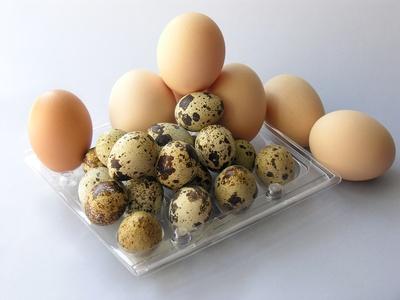
At the first stage, you can eat chicken and quail eggs.
- Basic nutrition: lean meats;
- fish and seafood: shrimp, mussels, scallops;
- chicken and quail eggs;
- vegetable oil.
- sour milk, cottage cheese;
- bread, pastry and sweets;
Second phase
The duration depends on the planned weight after the diet and can take from 2 weeks to several years. The daily carbohydrate intake is determined experimentally. Weight is monitored 4 times a month and carbohydrates in food are adjusted. If the weight increases or remains the same, a decision is made to return to the 1st phase.
Third phase

When a person reaches the desired mark on the scales, then he can move on to stage 3 of the diet.
The countdown begins after the patient reaches the desired weight. Principles:
- The main task is to determine the optimal balance of carbohydrates for each patient, which will be able to maintain weight at the desired level.
- Every week for 2-4 months, 10 g of carbohydrates are added to the low-carb diet.
Fourth phase
Maintaining phase 4 continues throughout the life of a patient with diabetes. To facilitate diet planning, special tables were created indicating the carbohydrate content of a particular product. Thanks to them, a low-carb diet for type 1 diabetes ceases to be boring: every person can create their own culinary masterpiece in the kitchen without harm to the body.
Blood sugar measurement frequency
Regardless of the form of the disease, each patient should measure their sugar readings themselves. The procedure is carried out at least 4 times a day for a week. The obtained data is entered onto the sheets of Glucograph III.
Monitoring allows you to evaluate the impact of medications and nutrition on sugar fluctuations. Only with the help of weekly indicators can you develop your own monosaccharide stabilization plan.

Before measuring, you must wash your hands thoroughly. It should be borne in mind that if the fingers come into contact with glucose preparations, alcohol and other substances, the indicators may become distorted to a greater extent. Keep the meter and hands warm. You can warm your hands with warm water.
In the table, each day is divided into columns and blocks. Life events that can affect glycemia are recorded in separate cells.
This may include:
- taking medications,
- physical activity,
- various infectious diseases,
- hypothermia,
- poor nutrition.
This table allows you to evaluate how various factors affect sugar and create an individual recovery program.
The essence and benefits of diet for diabetes
A low-carb diet for type 2 diabetes has two goals:
- Weight loss. It has been established that when losing weight by 5-10%, the condition of patients improves significantly.
- Controlling sugar levels. Following a low-calorie diet allows you to predict changes in sugar even before food enters the body.
The diet should be balanced. There is no need to completely give up carbohydrates, but their quality must be taken into account. “Bad” carbohydrates are removed and low GI foods are added, which help saturate the body for a long period. A low-calorie diet for type 2 diabetes is less common, since it is difficult for the patient to keep himself within 1500 calories.
Basic Rules
Principles of nutrition for diabetes:
- you can’t fry, baking, boiling, steaming is allowed;
- salt is limited;
- at least 2 liters of water per day;
- small portions, 5-6 meals;
- consume carbohydrates before lunch;
- half the daily protein intake is of animal origin;
- calorie norm - up to 1880 kcal;
- consumption of animal fats is reduced;
- carbohydrate foods are removed from the diet.
What can you eat if you have diabetes?
List of permitted products:

Patients can include buckwheat in their diet.
- Cereals: buckwheat;
- barley;
- pearl barley;
- oatmeal;
- millet
- cabbage soup;
- liver;
- feta cheese;
- sliced seasonal vegetables or salads;
- Rye bread;
- gelatin candies;
- fresh and baked sweet peppers;

What foods can be eaten and should be removed from the diet of patients with high blood sugar.

